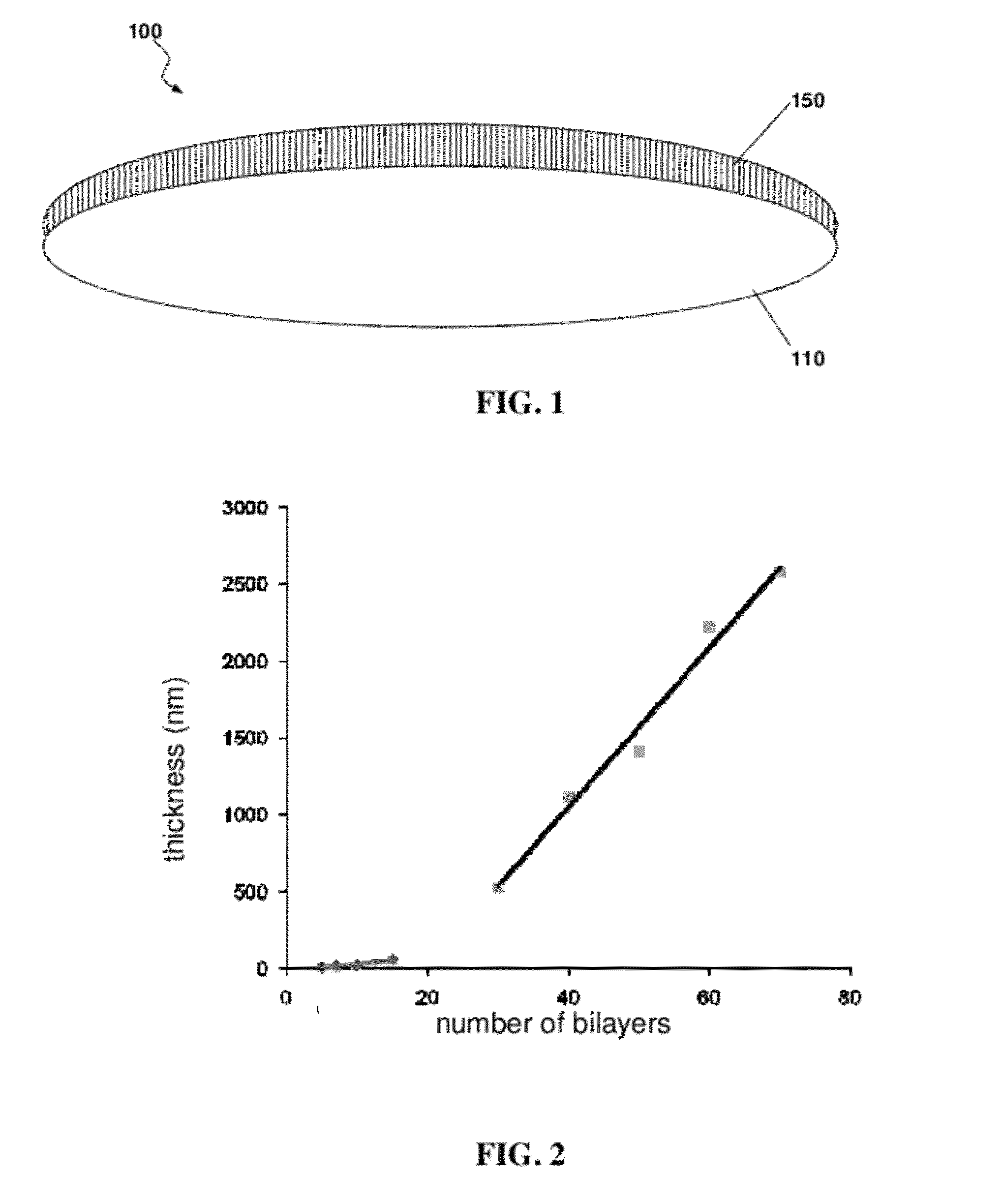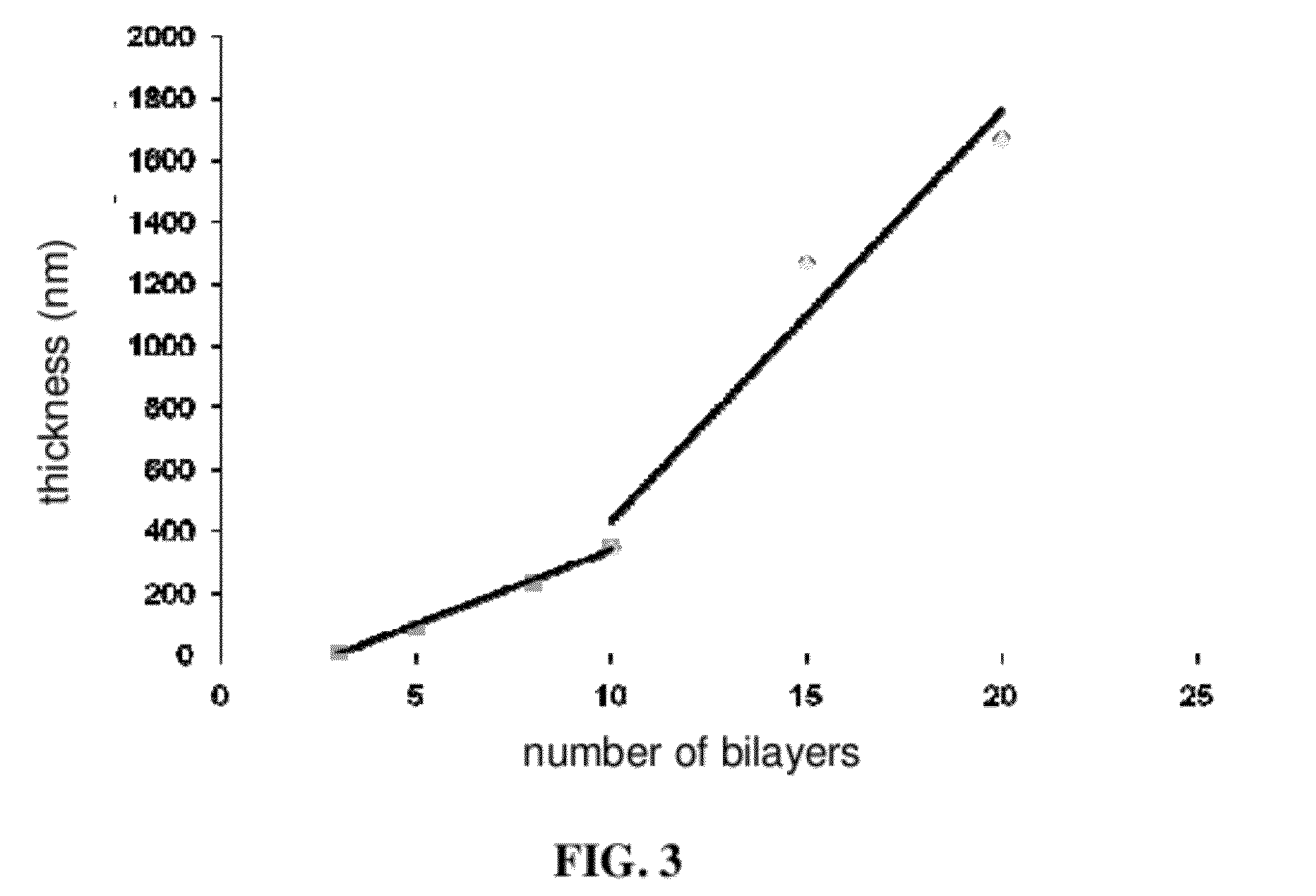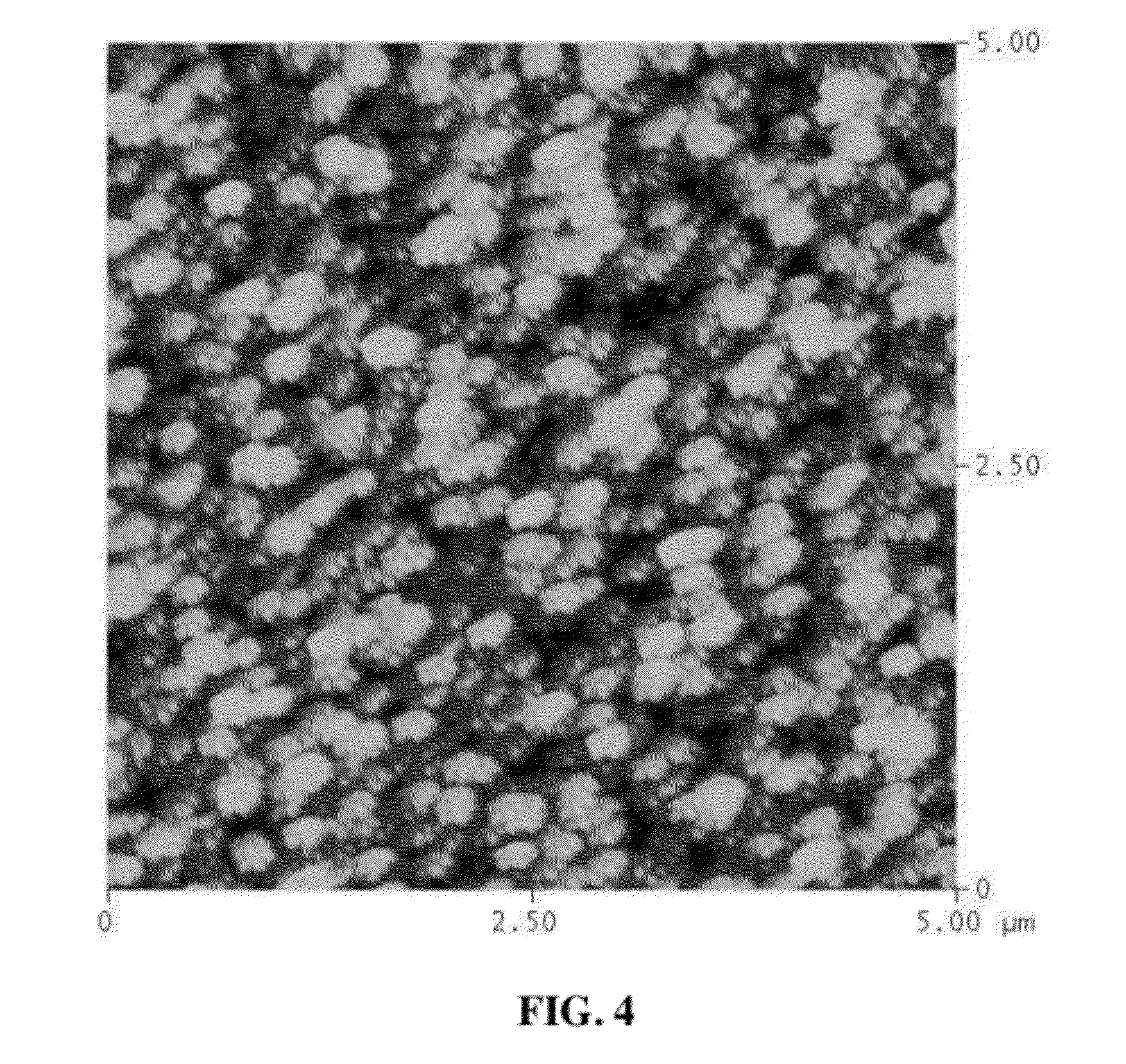Coatings
a coating and coating technology, applied in the field of coatings, can solve the problems of fogging in the transparent substrate, vehicle windows, greenhouse windows, etc., and achieve the effect of durable anti-fogging properties and easy assembly
- Summary
- Abstract
- Description
- Claims
- Application Information
AI Technical Summary
Benefits of technology
Problems solved by technology
Method used
Image
Examples
example 1
[0109]The adsorption of all polymer / polymer systems on glass, sapphire, and polycarbonate slides was carried out with a Stratosequence VI spin dipper (Nanostrata inc.) controlled by StratoSmart v6.2 software. Dipping times for the polymers were 10 minutes followed by three rinses in the same pH water as the pH of polymer solution. One two-minute and two one-minute rinses were used between polymer dips. The concentration of chitosan (CHI) and carboxymethylcellulose (CMC) was 0.1 wt %. In the CHI / PAA-g-PEO coatings, the concentration of PAA-g-PEO was 0.07 wt %. The pH of the polymer solutions and water was adjusted with either HCl or NaOH.
[0110]The thickness growth of the chitosan / carboxymethyl cellulose system as a function of the number of deposited bilayers on glass substrates was measured (FIG. 2). The thickness of a 10 bilayer coating was around 23 nm. When the number of bilayers was 20, the thickness of the coating reached 72 nm. The thickness of a 30-bilayer coa...
example 2
Crosslinking Chemistry
[0111]the chitosan and carboxymethylcellulose system was crosslinked by using traditional coupling reactions involving EDC and NHS. A 10 bilayer (CHI / CMC)10 coating assembled at pH 4 onto glass and polycarbonate substrates was immersed into a pH 4.5 solution of 400 mM EDC and 100 mM NHS for 15 minutes and then rinsed with the same pH.
example 3
Anti-Fog Tests
[0112]The transmission of coatings on glass and polycarbonate was measured at 100% humidity and 23° C. The crosslinked 10 bilayer CHI / CMC coating showed high transparency (94%). After the substrate was placed into the humidity chamber for 120 seconds, the relative transmission (Tr) was 95%. The relative transmission (Tr) of the coating on polycarbonate after this treatment was 75%.
[0113]The transmission of the chitosan / PAA-g-PEG coating on glass and polycarbonate was measured at 100% humidity and 23° C. Coatings having 15 bilayers showed high transparency on glass (92%). After the substrate was placed into the humidity chamber for 70 seconds, the relative transmission (Tr) was 100%. The relative transmission (Tr) of the coating on polycarbonate was 99%. The haze of the both coatings was 0.2%, which was much better than the 5% haze of a coating as described in U.S. Pat. No. 5,804,612, which is incorporated by reference in its entirety. FIG. 4 shows a topographical image...
PUM
| Property | Measurement | Unit |
|---|---|---|
| humidity | aaaaa | aaaaa |
| humidity | aaaaa | aaaaa |
| humidity | aaaaa | aaaaa |
Abstract
Description
Claims
Application Information
 Login to View More
Login to View More - R&D
- Intellectual Property
- Life Sciences
- Materials
- Tech Scout
- Unparalleled Data Quality
- Higher Quality Content
- 60% Fewer Hallucinations
Browse by: Latest US Patents, China's latest patents, Technical Efficacy Thesaurus, Application Domain, Technology Topic, Popular Technical Reports.
© 2025 PatSnap. All rights reserved.Legal|Privacy policy|Modern Slavery Act Transparency Statement|Sitemap|About US| Contact US: help@patsnap.com



